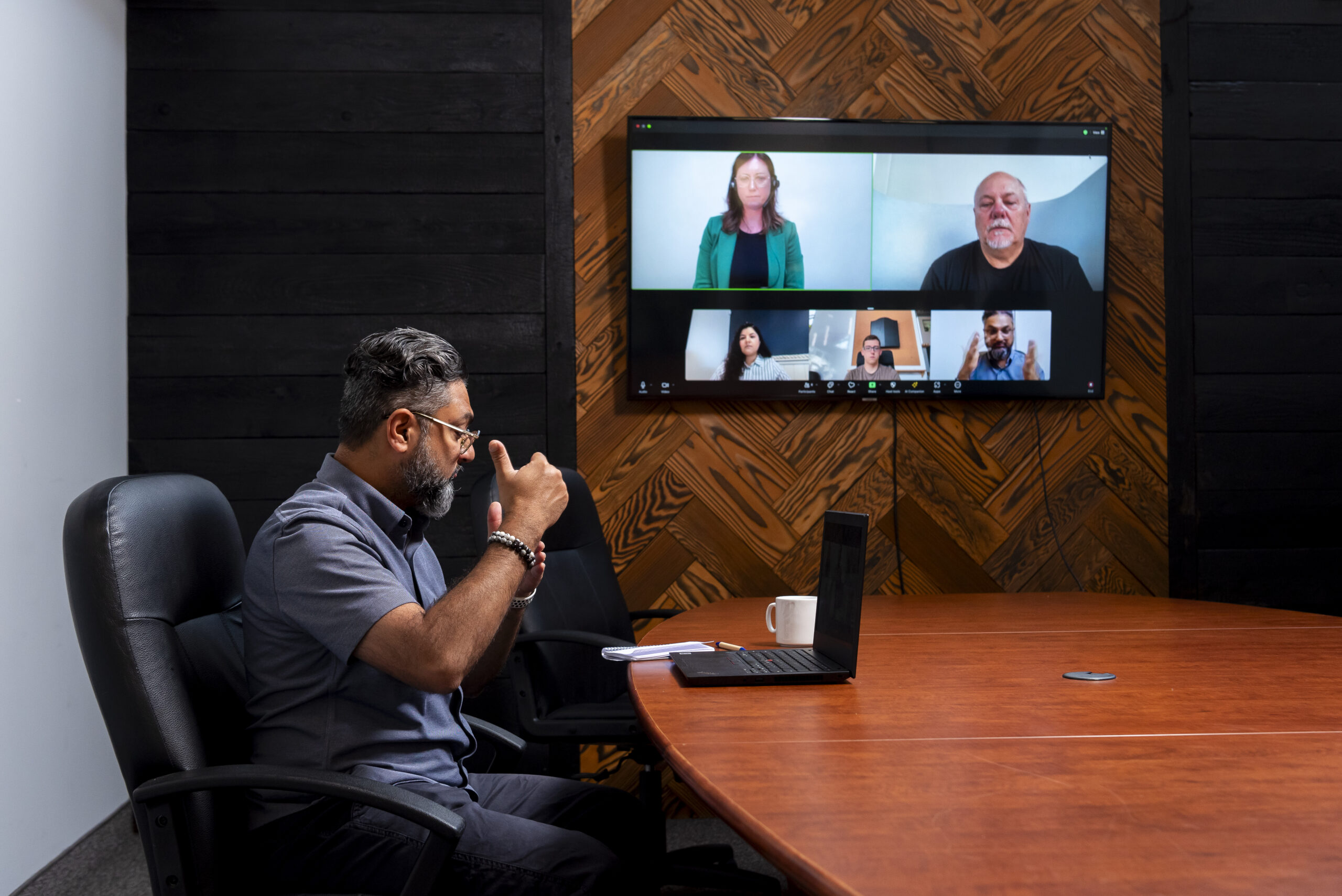What’s the difference between VRS and VRI?
Today’s technology makes it easier than ever to access sign language interpreting services. Instead of meeting face-to-face, sign language users and hearing individuals can connect with an interpreter remotely, making communication convenient from any location. There are two different ways to do this: Video Relay Service (VRS) and Video Remote Interpreting (VRI). To determine which service best suits you (or your client), it’s important to understand the differences between them.
What is VRS?
Deaf, hard of hearing and speech-impaired Canadians use Canada VRS to access and make phone calls via online and cell phone-based technologies. VRS callers are connected with an interpreter who provides real-time interpretation for phone calls. To register for a Canada VRS account, you must be a Deaf, hard of hearing or speech-impaired Canadian who uses American Sign Language (ASL) or Langue des signes québécoise (LSQ).
Here’s how it works: Via video call, a sign language user connects with an interpreter who then places a telephone call to the hearing individual on the other end. VRS could be used by an employer connecting with an employee, a sister calling their sibling on the east coast, or someone placing a call to learn about a new government service.
The interpreter communicates in sign language with the sign language user and by spoken language with the hearing person. When someone hearing is trying to reach a Deaf, hard of hearing or speech-impaired person, they can call that individual’s VRS number. That way, the call will be routed via the interpreter in the VRS platform.
VRS is a free service in Canada and is available 24/7 via the Canada VRS app.
Did you know?
In 2016, SLIAO was selected by the Canadian Administrator of Video Relay Service (CAV) to be a Video Interpreter Provider (VIP) for Canada VRS.
What is VRI?
VRI is a paid service where a sign language interpreter facilitates communication between a sign language user and hearing person via video using a smartphone, tablet or computer with a webcam. It can be scheduled in advance or accessed on demand. With VRI, the sign language user and hearing person can be in the same room—or connecting online. In either of these cases, the interpreter is remote.
Video remote technology allows for the benefits of face-to-face interaction plus on-demand capabilities and access to a larger pool of interpreters. Especially in light of COVID-19, demand for this service is skyrocketing.
When to use VRI
You can use VRI when the sign language user and hearing person are together or when they’re in different locations communicating remotely. VRS is a telecommunications service that’s reserved for phone calls, so when the interaction is face to face, VRI is the best option.
Here are a few VRI use cases:
- A Deaf employee of an investment company has daily stand-up meetings for 10 minutes to discuss the team’s objectives. The Deaf employee participates using a computer and webcam to connect and a Video Interpreter relays the meeting discussion using VRI.
- A parent who uses sign language is picking up a prescription for their child’s strep throat. The pharmacist communicates in spoken word, so they use VRI on a computer or tablet to provide the pick-up information and share recommended dosage.
- A grade three teacher is conducting a parent-teacher interview with a parent who uses sign language. Via VRI, the teacher seamlessly connects with the interpreter and shares progress updates with the parent.
VRI is a great alternative when on-site interpreting isn’t possible or available. Because all three parties can see each other’s facial expressions and body language, you’re less likely to have miscommunications.
Want to know how your organization can use VRI?
Learn more about VRIRelated Articles
Accessibility, VRI | Nov 19, 2024

